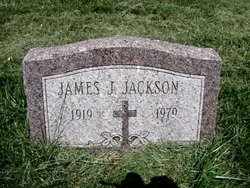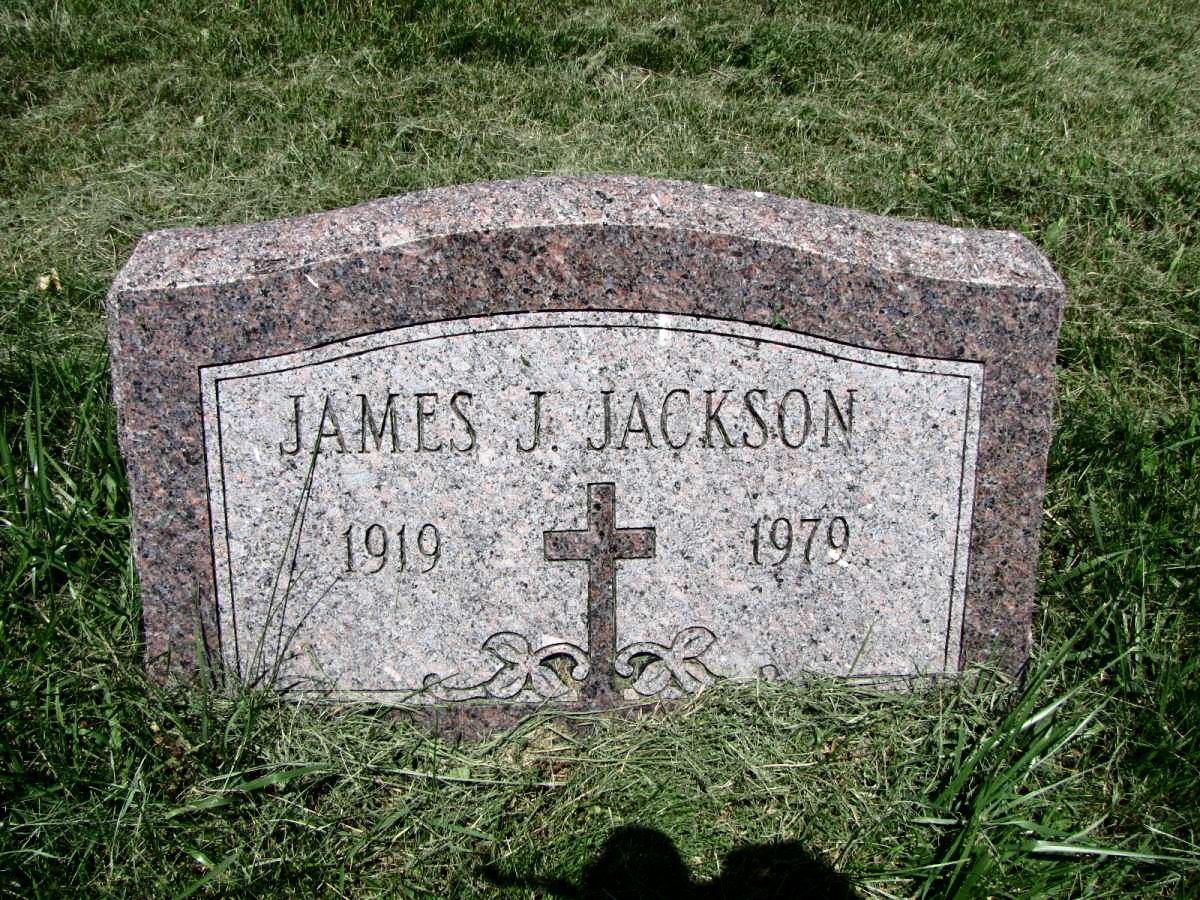>From Midland Roots: "Jimmy joined the service and was originally placed with the Military Police. He didn't care for this work and eventually was transferred to the 82nd Airborne Division. His unit attempted to jump behind enemy lines on D-Day, but missed their landing zone and were mired in the hedgerows. While searching for other units, they would encounter farmhomes, etc. and liberate some of the household goods. When he returned home after the war, he still had a handmade linen cloth that he presented to his mother. For years, this was used in the house, on a table. They made another drop, sometime later, and Jim was subsequently captured by the Germans. This might have been part of "Operation Market Garden". His Prisoner of War number was 88533. He was sent to StalagLuft III, which is located near the town of Sagan (or Zagan), Poland. It is about 160km southeast of Berlin. Stalag Luft III is known as the campwhere the "Great Escape" took place. Almost 80 men got out, but only 3 actually got away. Some 50 to 55 escapees ere executed by the Germans, at Hitler's command. Stalag Luft III is also the camp where the "Wooden Horse" escape took place by some of the British troops. Books and movies have chronicled both of these stories. Later, he was transferred to Stalag Luft 7A, near Moosburg, about 35km northeast of Munich. While interred at Stalag Luft 7a, the POWs were often shipped by rail as labor teams. Typical daily rations would consist of a slice o fbread and some soup that was best consumed in the dark. Frequently, men would be sent into the Black Forest and the train would return empty. It was obvious that these prisoners were being exterminated. He was able to successfully escape from a rail car, with several other inmates, and hid during the day while walking at night. During this time, he developed the habit of walking with his hands folded in front of him. He did this believing that eventually he would be suddenly shot from behind and his abdomen would explode. By doing this, he might be able to hold his guts in place. One can only imagine how terrifying this thought was to a lost and hungry young man, many miles behind enemy lines. They were finally found by an allied patrol, only to find out that the war in Europe had been over for three days."
-------------------------
>From Midland Roots: "Jimmy joined the service and was originally placed with the Military Police. He didn't care for this work and eventually was transferred to the 82nd Airborne Division. His unit attempted to jump behind enemy lines on D-Day, but missed their landing zone and were mired in the hedgerows. While searching for other units, they would encounter farmhomes, etc. and liberate some of the household goods. When he returned home after the war, he still had a handmade linen cloth that he presented to his mother. For years, this was used in the house, on a table. They made another drop, sometime later, and Jim was subsequently captured by the Germans. This might have been part of "Operation Market Garden". His Prisoner of War number was 88533. He was sent to StalagLuft III, which is located near the town of Sagan (or Zagan), Poland. It is about 160km southeast of Berlin. Stalag Luft III is known as the campwhere the "Great Escape" took place. Almost 80 men got out, but only 3 actually got away. Some 50 to 55 escapees ere executed by the Germans, at Hitler's command. Stalag Luft III is also the camp where the "Wooden Horse" escape took place by some of the British troops. Books and movies have chronicled both of these stories. Later, he was transferred to Stalag Luft 7A, near Moosburg, about 35km northeast of Munich. While interred at Stalag Luft 7a, the POWs were often shipped by rail as labor teams. Typical daily rations would consist of a slice o fbread and some soup that was best consumed in the dark. Frequently, men would be sent into the Black Forest and the train would return empty. It was obvious that these prisoners were being exterminated. He was able to successfully escape from a rail car, with several other inmates, and hid during the day while walking at night. During this time, he developed the habit of walking with his hands folded in front of him. He did this believing that eventually he would be suddenly shot from behind and his abdomen would explode. By doing this, he might be able to hold his guts in place. One can only imagine how terrifying this thought was to a lost and hungry young man, many miles behind enemy lines. They were finally found by an allied patrol, only to find out that the war in Europe had been over for three days."
-------------------------
Family Members
Sponsored by Ancestry
Advertisement
Advertisement








